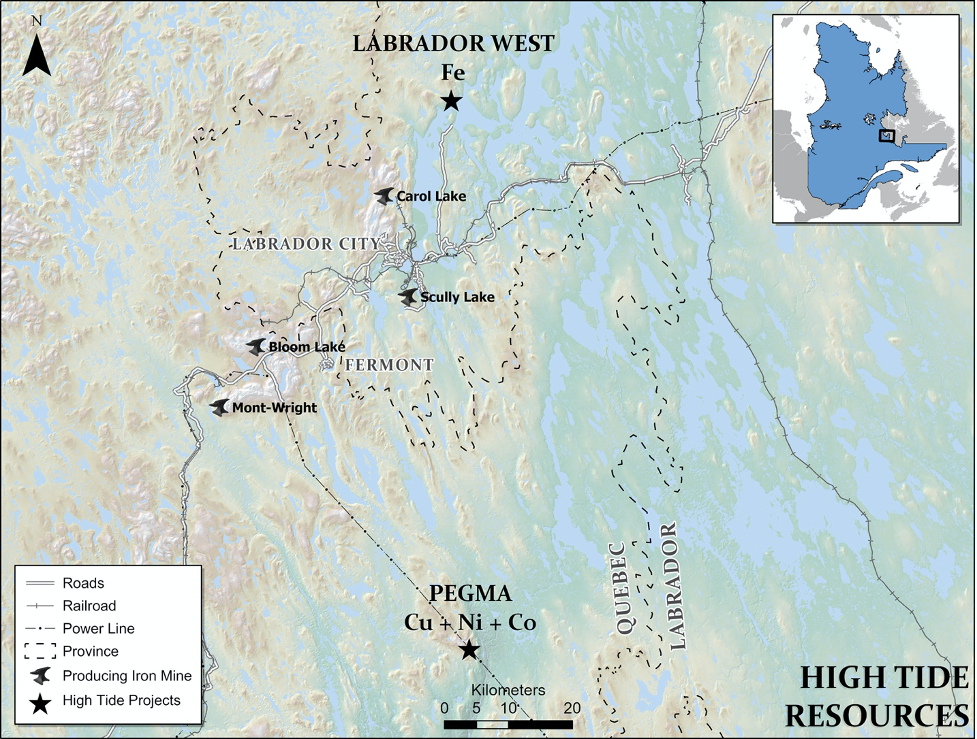Lac Pegma Property, Quebec
General
- High Tide Resources is a privately-owned subsidiary of Avidian Gold Corp with exclusive option to purchase 100% of the Lac Pegma Copper-Nickel-Cobalt sulphide deposit.
- The Project is located approximately 50 kilometres south of Fermont, Quebec and is bisected by a major Hydro Quebec electrical transmission line, which also provides overland access to the project.
- Eighty-four (84) BQ diameter diamond drillholes have been drilled on the project totalling 7678m.

Deposit Type
- Orothomagmatic Nickel – Copper – PGEs
Geology
- Orthomagmatic sulphide deposit at the Lac Pegma property is hosted within a gabbro to gabbro-norite sill, intruded along the contacts of the Proterozoic-aged equivalent of the Knob Lake Formation extension south from Wabush, NL.
- The bedrock geology at the prospect area consists of metamorphosed allochthonous sediments and volcanics, initially deposited as the Attikamagen Series of the Labrador Trough. The rock types consists of a north trending packages of quartz-biotite gneiss, kyanite gneiss and dolomitic marble represent the original quartzite, siliceous shales and limestone lithologies.
- Lac Pegma Deposit has undergone amphibolite facies metamorphism and has been complexly folded during the Grenville Orogeny (ca 1.0 Ga).
- Twenty-eight (28) of the drill holes has defined an ultramafic portion of a sill up to 50 meters true thickness. These holes together with a coincident magnetic anomaly has confirmed a north-south strike length of at least 860 meters, a portion of which, outcrops on the property.
Mineralization
- Based on drilling to date, the deposit presents as net-textured to locally massive copper, iron and nickel sulphides. Greater accumulations of sulphide content and grades are associated with the basal portion of the intrusion.
- In 1997 Diadem Resources reported a non NI 43-101 compliant “indicated reserve of 2 million tons of 0.62% Cu, 0.35% Ni and 0.03% Co.” The Lac Pegma deposit was not assayed for platinum or palladium which are elements commonly found in this type of sulphide deposit.
For additional information please visit the High Tide Resources website.
